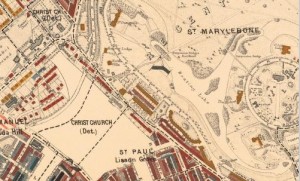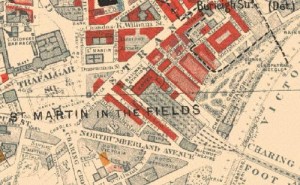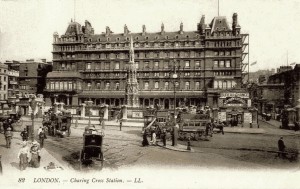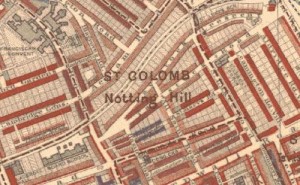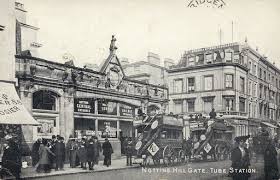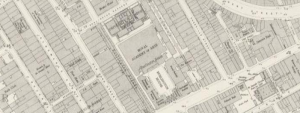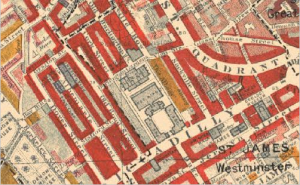Regent’s Park is the home of the Lord Watergate. Gertrude Lorimer first goes to this location and makes the acquaintance of Watergate when she is called on for one of her first commissions: the photographing of the recently deceased Lady Watergate. As their title indicates, this was an area of wealth and high society. This can also be gleaned from the Charles Booth archive.
The strip of color abutting the park is almost entirely yellow and red, indicators of middle- upper middle- and upper class homes. The Watergates at nearby Sussex Place certainly count among their numbers. But Lord Watergate is unique from the rest of the wealthy crowd by virtue of his interests.
Watergate is a man of science, particularly interested in biology and physiology. Though not passionate in his actions, he is, like Gertrude, passionate in his work. On page 85 Amy Levy describes Watergate’s home as “a name so well known in the scientific and literary world.” But the Lorimers “had, however, little personal acquaintance with distinguished people, and had never come across the learned and courteous peer in his social capacity.”
This would change by the end of the novel as Gertrude marries Lord Watergate and Regent’s Park becomes her home as well, adding the artistic world of photography to the “scientific” and the “literary.” While before the area surrounding Regent’s Park seems out of the Lorimers’ reach, their relationship with it changes from an austere house with a dead body to one of a home and family. It is here that Gertrude Lorimer gains the life that she was meant to live before her father passed away. She is married to a peer and living in a fashionable area but still seriously pursuing her interests in both photography and literature. Regent’s Park becomes the place where, to use the modern terminology, she can have it all.
Booth, Charles. “Baker Street Station.” Charles Booth Online Archive. Web. 17 Dec. 2015.
Levy, Amy. The Romance of a Shop. Peterborough, Ont.: Broadview, 2006. Print.

